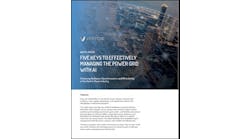By Scott Schnelle
Guest Blogger, Energy Efficiency Markets
April 11, 2012
Your clients may hold some common misconceptions about how to begin conserving energy in their homes. In this article, I hope to debunk a few of those misconceptions. An audit from a company like EnergyLink is a good place to begin; it shows homeowners where to concentrate.
A report called Driving Demand for Home Energy Improvements looked at successful and unsuccessful energy efficient programs across the country. Here are a few common illusions that prevented programs from being as effective as possible.
Misconception 1: People get energy efficient improvements just to save money.
There are a number of reasons that people cite as to why they want to improve the efficiency of their homes. These reasons include cutting down on waste, stimulating the economy, achieving tax incentives and just plain being kinder to the earth.
Misconception 2: Solar panels and expensive installations are the only way to improve efficiency.
There are many things your clients can do to cut back on the amount of energy they use: air seal their windows and doors, install insulation or energy efficient lighting and replace windows and seal ducts. They might also replace air conditioners, hot water heaters and washers and dryers that are past their prime with more energy efficient models.
Misconception 3: Incentive programs don’t work.
It hasn’t always been easy for many regions, towns, states and cities that have received funds through the American Reinvestment and Recovery Act to develop effective energy efficiency programs. However, some tactics have been successful. For example, appeals to health, comfort, energy security, competition and community engagement all increase participation in these types of programs. It is important to speak to consumers on their level about why their home needs to be improved.
Misconception 4: Improvements are the same all over the country.
Driving Demand for Home Energy Improvements also found that programs tailored to their geographic region are most effective. Customers are more inclined to participate in program tailored to them. For example, if you live in a community where the average homeowner has a large amount of disposable income, it may be beneficial to talk about large-scale improvements that will save more energy in the long run. Energy auditors near you will know what kinds of improvements are typical for your geographic region.
Scott Schnelle works with EnergyLink in Columbia, MO. EnergyLink helps mid-Missouri homes achieve peak performance through energy efficient installations.






